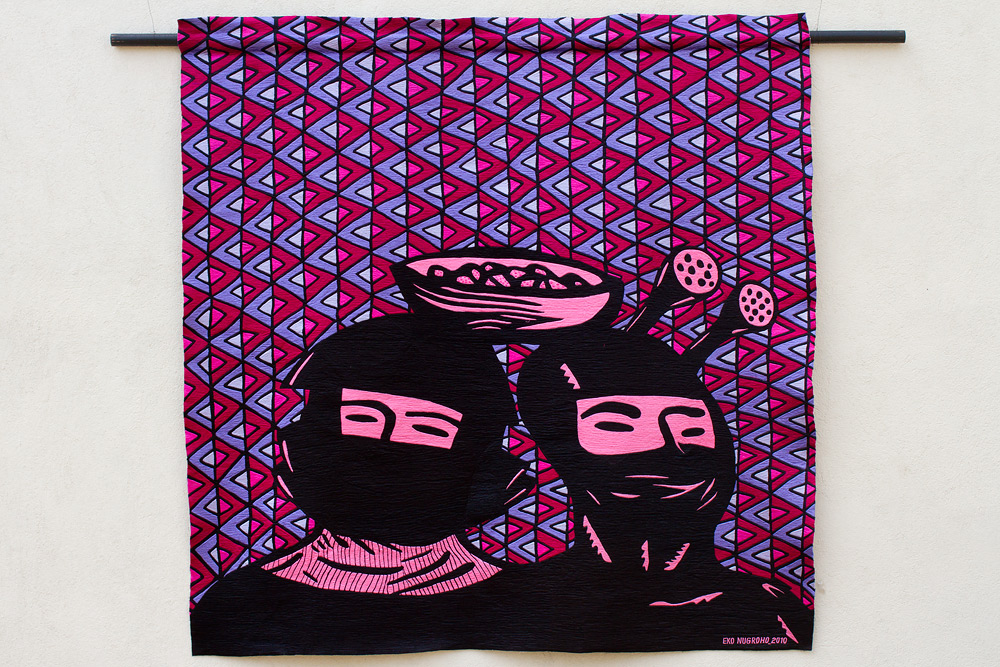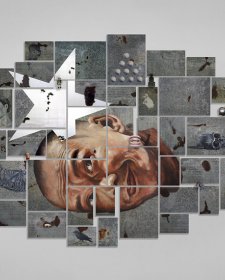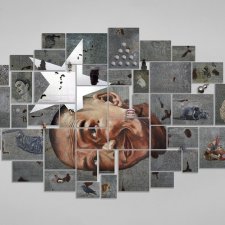The Balancing Act
The late 1990s in Indonesian history, also known as Reformasi (period of reformation), was a tumultuous time marked by socio-economic crisis, political chaos and bloody confrontations that led to the downfall of Soeharto’s thirty-year iron fist rule. Among the major changes that became a reality post-Reformasi was the freedom of expression, heralding a new era of creativity that would profoundly transform Indonesia’s cultural scene. Cities like Yogyakarta became the centre for dynamic expressions and new approaches as artists seized the opportunity to play, experiment, and exercise their newfound freedom. FX Harsono, Mella Jaarsma, Nindityo Adipurnomo, Heri Dono, Eddie haRA and Agus Suwage were among the artists who led the way in carving new territories of expression in Indonesia’s rich and diverse contemporary art scene.
Born and raised in Yogyakarta, Eko Nugroho (b. 1977) entered the art scene at the height of Reformasi. Working across disciplines and sites, making public murals, paintings and drawings, and exploring other media and forms such as embroidery, artist’s books, comics, video animation and contemporary wayang kulit (shadow puppets) either on his own or collaboratively, Eko’s optimism and can-do attitude embodies the ethos of this period. According to Indonesian curator Enin Supriyanto, Eko belongs to the a generation of artists called the ‘2000 Generation’ who,
in contrast to the generation just before him, many of whom became integrally involved in the political activism of the student and youth movements of the late 1990s and blatantly included political messages in their works … (Eko) bases his work on his daily experiences … or passing impressions of the socio-political issues he observes at random.1
Like his peers of the ‘2000 Generation’, Eko appropriated, reinvented and subverted the ‘look’ of popular culture that inundates his media-saturated surroundings to address the experiences of his daily encounters in a newly reformed society. Merging ‘high art’ with popular and street culture, Eko has emerged as one of the most popular and accessible interpreters of contemporary Indonesian experience. Who am I? What am I? Where am I going? Why do we do the things we do? Questions about humanity’s existence and contradictory and ironic nature, our frivolity and dysfunctions, and the absurdity of life in general are addressed through an ‘alter-’, comic-inspired universe populated by hybrid-aliens and bizarre narratives.
Here his hybrid-aliens or part-man/part-machine figures, whose faces are concealed by masks, helmets, or machine parts, never revealing their true self, are symbolic representations of Man. He and his many manifestations are the (silent) messenger and the narrator; he is you, me, the Artist, we, Everyman and the Other all at once. The masks or headgear worn by Eko’s protagonists are symbols of protection and concealment, and at the same time serve as metaphors for different psychological states such as detachment, isolation and indifference. The feeling of alienation is palpable in Demokrasi dalam empedu (Democracy in bile), a commissioned ‘mural’ (made with sticker cut-outs) for the National Portrait Gallery’s foyer, depicting six solitary figures in a desolate space. The inability to connect with one another is signified by the physical distance between each figure and their lack of contact with one another, oblivious to the other’s presence, ‘floating’ against a stark white expanse. The tension between positive and negative space, and the emptiness between the figures placed at different pictorial depth creates a dynamic ‘push-pull’ effect by appearing flat yet ‘deep’ at the same time, underlining the scene’s sense of estrangement and artificiality.
The symbolic concealment of his protagonists’ faces addresses Man’s duality. The figure in Keep the balance 2010 and Possible is fake 2010 share similar physical attributes: two heads on one body. Here, the masks and multiple heads connote the various roles and disguises we assume, putting on ‘false faces’ or ‘alter’- identities, our compulsion to perform in a diverse range of situations. As the title Possible is fake suggests – along with the symbol of the crescent moon and star and the cross, this work addresses the ongoing unrest and conflict between Muslim and Christian groups in Indonesia and beyond and questions the possibility of peaceful co-existence, if it is merely a political illusion. In Keep the balance, the metaphorical plate implies the grey areas of living, that life is ultimately a balancing act as we struggle to keep in check the inner forces at work within ourselves. Extending beyond the self, the balancing act in this image can also be read within a broader context as the precariousness of negotiating the tensions between differing ideologies or communities that share a single body or similar origins.
Adeline Ooi
Co-founder of RogueArt
1 Enin Supriyanto, ‘Tales from Wounded-Land’, Tales from Wounded-Land: Eko Nugroho and Wedhar Riyadi, New York: Tyler Rollins Fine Art, 2008.














